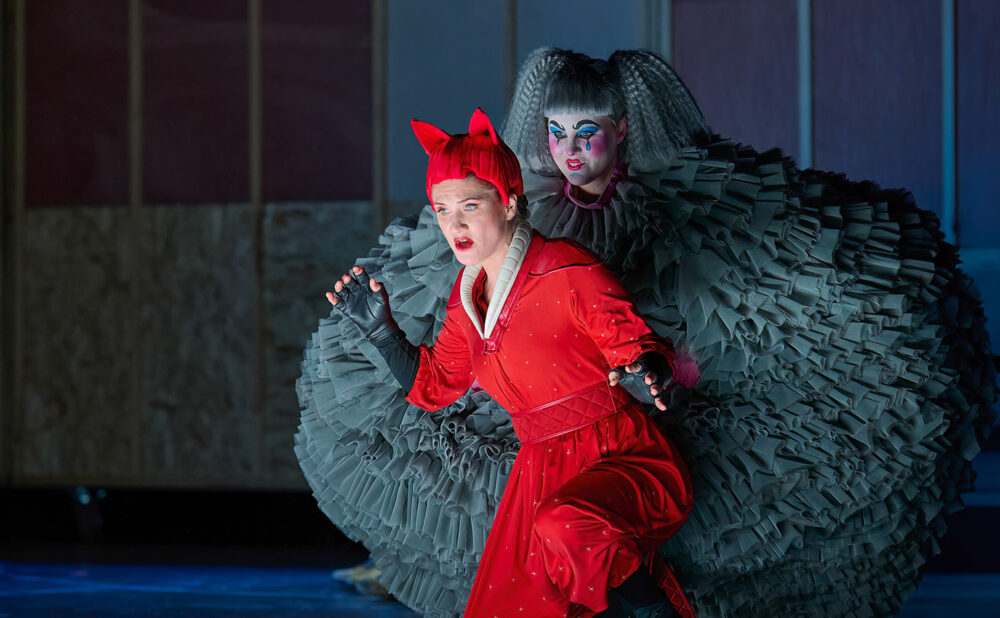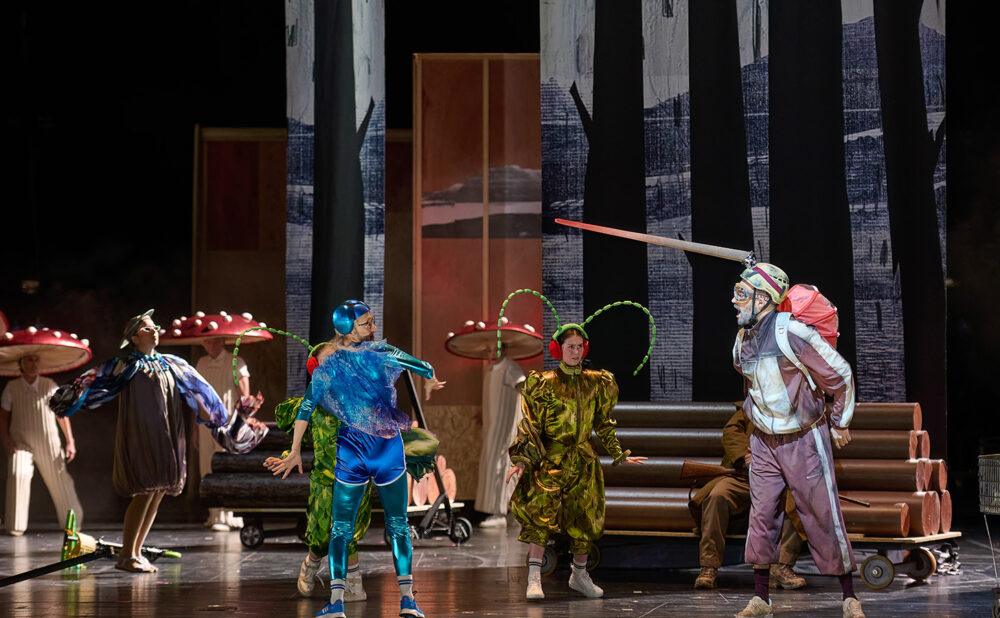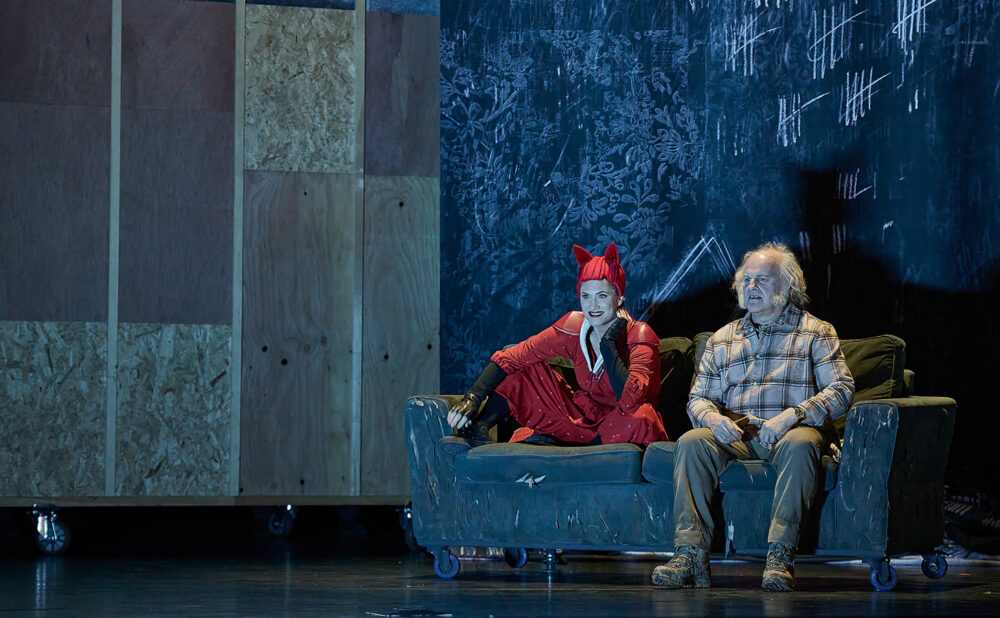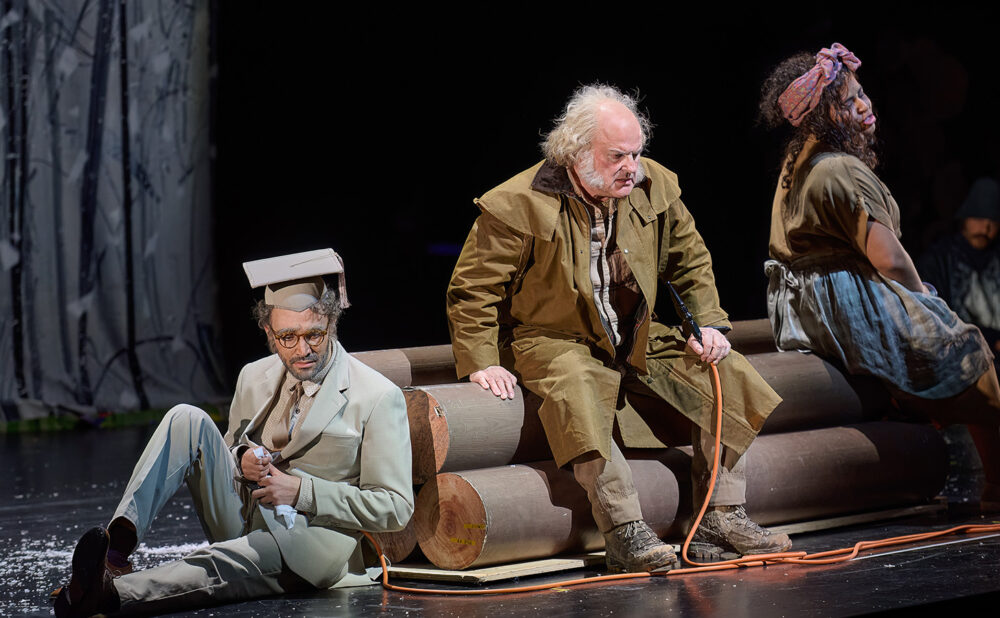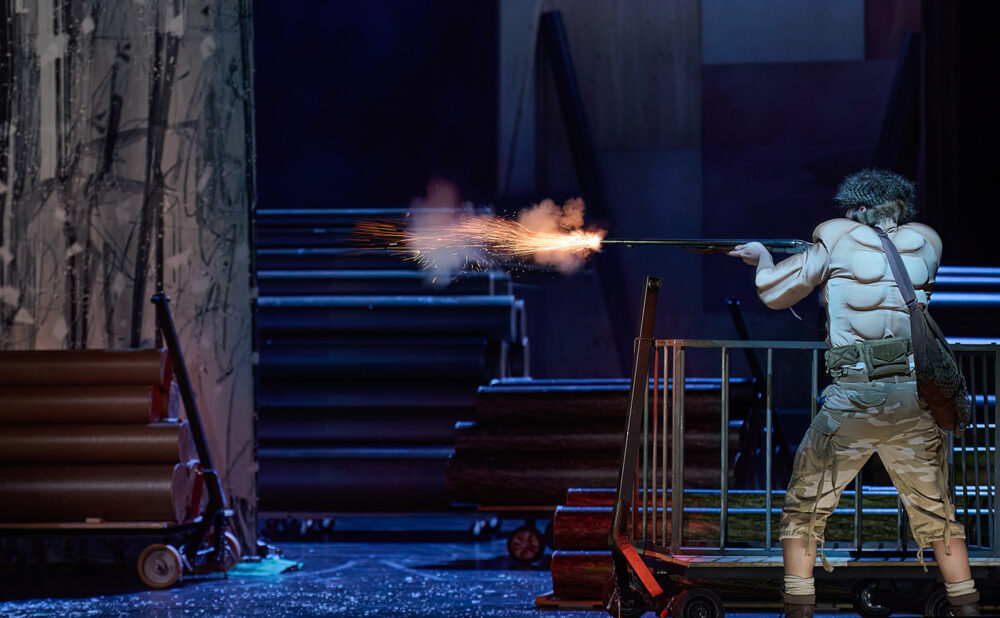Review: ‘The Cunning Little Vixen’ at the COC nurtures a forest of disparate tones
Jamie Manton’s production hops between different visual and emotional worlds
What: The Cunning Little Vixen
Where: Four Seasons Centre for the Performing Arts, 145 Queen St. W.
When: Now, until Fri., Feb. 16
Highlight: The tender climactic aria of the Forester, sung with sensitivity by Christopher Purves
Rating: NNN (out of 5)
Why you should go: It’s the first time in 25 years that the COC has tackled this breezy but complex opera by Czech composer Leoš Janáček.
PIVOTING from lovey-dovey foxen to morose humans to children in frog costumes, the Canadian Opera Company’s production of The Cunning Little Vixen — an import from the English National Opera — offers engaging shifts in tone.
But Jamie Manton’s contemporary take on Czech composer Leoš Janáček’s 1923 opera turns out to be a touch diffuse. It dips its toes into many different worlds but doesn’t quite have the focus necessary to explore any of them fully.
At the opera’s start, a burly Forester (Christopher Purves) captures the titular young Vixen (Jane Archibald) and takes her into his chaotic household. We fast forward to the Vixen, grown up and unhappy, escaping to a nearby forest; she then falls in love with a charming Fox (Ema Nikolovska) and has a bevy of children before being killed by a Poacher (Alex Halliday). On the peripheries, a set of adult humans bumbles about, drinking, firing guns and seeming wholly out of touch with nature.
Set and costume designer Tom Scutt imbues the Forester’s world with an aura cold and contemporary. Clad in flannel, a brown coat and muddy boots, he’s not a benevolent keeper of trees but a logger; felled trunks and half-constructed flats of wood abound. Key, also: an existential emptiness. Negative space defines the visual world of The Cunning Little Vixen, with the full breadth of the Four Seasons stage being employed. Melancholy hangs thickly in the air.
But the forest — the forest! There, life hums with energy, thanks not to a huge set but cheeky, lighthearted costumes. Frogs, mushrooms, woodpeckers, mosquitoes, badgers, roosters, grasshoppers and a brood of hens: the list goes on. The fun of intermission was hearing the audience members buzz about their favourite of these wildlife offerings.
From the ceiling hangs a large scroll. It slowly unfurls over the course of the opera, revealing colourful paintings appropriate to the scene at hand. Despite the otherwise desolate scenography, this injection of art provides bursts of colour.
Archibald is a mercurial vixen, effectively selling her character’s affecting journey. When she falls for Fox, her spirited soprano combines with Nikolovska’s spacious mezzo to spin a cocoon of love that’s in a totally different world from that of the brutish humans.
But Purves’s sensitive Forester gets the opera’s most climactic and touching aria. Though sombre, he learns to appreciate the beauty of the forest around him — the sun, the primroses, the blossoms. As this realization hits, Scutt has the scroll depict music notes, the building blocks of opera itself, drawing a parallel between Forester’s attention to the aesthetics of his surroundings and the audience’s attention to what’s on stage.
There’s real complexity in the opera’s exploration of all these different tones, as well as its counterpoint between the world of animals and humans. But with a runtime of just a couple hours (including a 25-minute intermission), The Cunning Little Vixen only samples its many visual and emotional worlds; it doesn’t have the space to dig into them deeply. The resulting production is beautiful, evocative and intriguing — but also somewhat slight.
Click here for more information.

